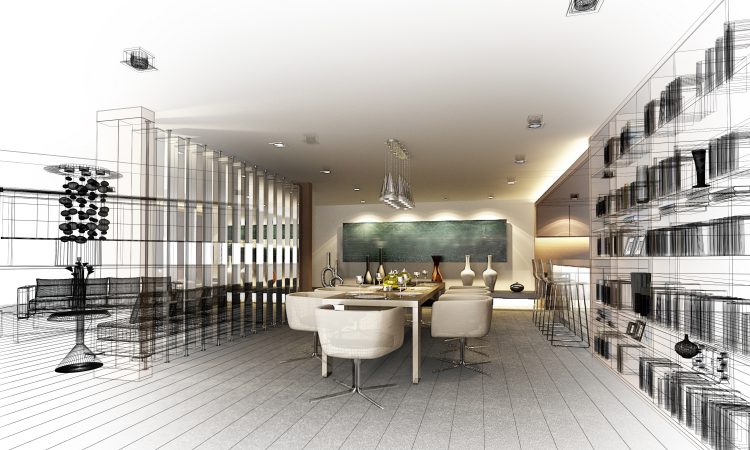Building furniture model in 3D layout. Challenge no. 1
Furniture design can be categorized by many criteria – furniture type, materials, tools used for manufacturing, etc. In this article, we’ll look at the challenges faced by companies that deal with projects or bespoke production.
In serial production, the context is not something that must be considered. When designing a table for mass production designer solve ergonomic and technological questions of furniture. The placement and adjustment for specific premises questions are left for the user. Working with projects or bespoke production is the opposite of mass production. The designer is responsible not only for the design itself but for furniture integration in the specific interior as well. Wall closets, kitchens, shops, ships – only a few from many typical situations when furniture designer MUST know where this furniture will be placed.
So let’s discuss specific challenges that furniture designer runs into while designing for a specific layout.
We would single out three:
- Layout import in CAD system;
- Design process based on a layout of premises;
- Management of changes caused by changes in the premises of the project.
Importing building layout into CAD
Without knowing the context – what is the space in which the furniture will stand – it is impossible to design it.
What does it mean for the designer? It means that he has to have this context – a premises model – in his CAD system. Good news is that designing architects or space planners save their projects to a file that can be passed to the constructor.
When receiving this file constructor have two option how to proceed:
- Import the file into CAD system which he uses, if the system allows it;
- If the system doesn‘t accept the file format, a designer needs to recreate given premises layout in his CAD system.
I guess it‘s pretty obvious that option A is much better – it saves time and eliminates a risk of errors while recreating premises layout in CAD system. But it is not an easily accomplished task. The market offers a bunch of CAD systems to address indoor planning challenges, ranging from general-purpose systems like AutoCAD, Sketchup, Revit to specialized planning tools. Meanwhile, a variety of software applications is used for furniture design – AutoCAD, Autodesk Inventor, Solidworks, IMOS, TopSolid Wood, Cabinet Vision, Pytha, etc.
Many systems mean many file formats in the market. Major design tools – such as IMOS, 20/20, Microwellum – create interconnected design systems for space planning and furniture design. However, such solutions are not suitable for everyone because of the price or because of the given features. In addition, it should be borne in mind that architects designing buildings use different systems, which can equally be incompatible with the planning systems of these producers as well. Therefore, most furniture designers face the challenge of moving premises model from architect system to their own.
Today there is no one universal and perfect model. Probably the most popular exchange option is DWG/DXF file formats. This format is recognized by many design systems as a universal CAD data exchange format. Unfortunately, it is not an answer to all questions. The most common issue is when 2D plan is provided and constructor needs to reconstruct a 3D view. In other words, this is a hybrid variant – part of the information is being transmitted in a file, and part of the information the constructor needs to reconstruct in his system.
Click this link to continue reading about “Building furniture model in 3D layout. Challenge No.2”
Or watch a video about building kitchen model in 3D layout:
Watch video
Also, you can download free Woodwork for Inventor trial here:
Free trial


